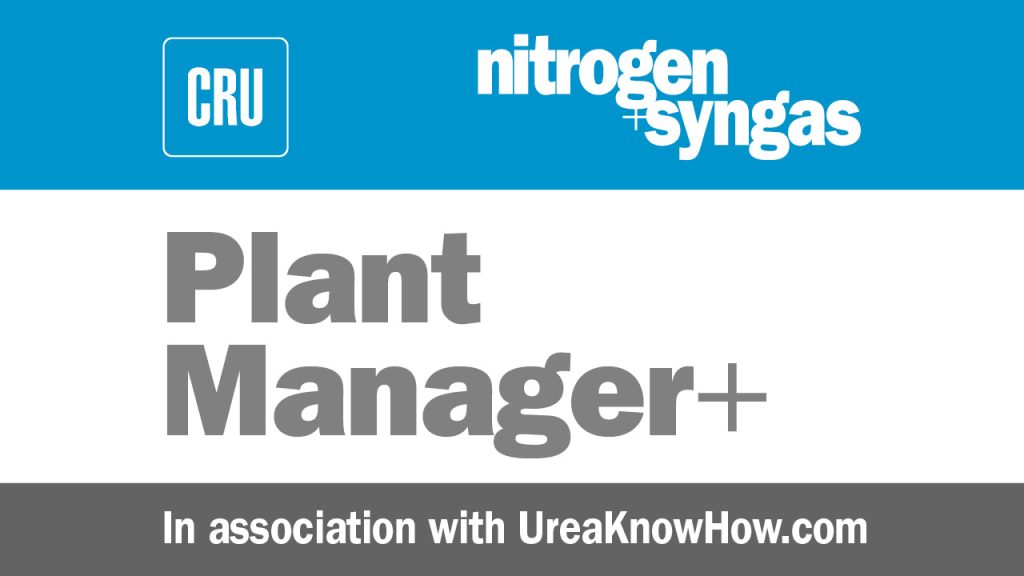Nitrogen+Syngas 375 Jan-Feb 2022

31 January 2022
Problem No. 64: Reasons and solutions for leak detection system choking

UreaKnowHow.com has developed such a system: the state-of-the-art AMMO LASER Leak Detection System.
Samee Ullah of FFCL in Pakistan starts this round table discuss ion with an important question: Is there any possibility that leak detection system tubing can get choked by anything other than carbamate leakage? Please share your experience.
Mark Brouwer of Ureaknowhow.com in The Netherlands replies and asks for further information: Other reasons can be:
- urea leakage;
- flushing with water and below zero ambient temperatures and
- fouling.
Muhammad Shoaib of Fatima Fertilizer Company in Pakistan replies for Samee: We are using a vacuum leak detection system.
Please share your experience regarding unblocking choked tubes.
Mark responds: Choking can occur in the tubes of the leak detection system or behind the liner. When a tube is choked it can be simply replaced, but when there is clogging behind the liner it becomes complicated:
Option 1 is to flush with water to dissolve the crystals causing the clogging. However, we strongly advise NOT to do this as water introduces several kinds of stress corrosion phenomena to the carbon steel pressure bearing wall.
Option 2 is to remove the liner, clean it and then re-install it, but this is a big exercise.
Option 3 is to use a vacuum-based leak detection system and connect it to both leak detection holes. In this way one “bypasses” the clogged area.
Kashif Naseem in Saudi Arabia shares his experiences: Be proactive and conduct the leak detection system test after 2-3 years to check the tubes and liner segment clearance.
Prem Baboo of Dangote Fertilizers Projects in Nigeria shares joins the discussion: If we find choking, the first thing we do is find out the reason for the choking. The choking can sometimes be removed by pressurising the petal with instrument air up to 7.0 kg/cm2 . Only carry out this practice in running mode as with an empty reactor the maximum allowable pressure behind the liner is only 0.2 to 0.3 kg/cm2 g subject to the condition of the liner thickness. Analyse in the lab for ammonia. The choking of weep hole tubing during operation of the plant is a serious problem and should not be taken lightly. The plant must be shut down if the lab analysis confirms ammonia.
Mark provides more information on unclogging leak detection circuits: A leak detection circuit can be clogged in the tubing part, this can be replaced or, after disconnecting it from the vessel, flushed.
It can also be clogged in the leak detection hole: these solids can be carefully removed mechanically.
Finally, if it is clogged behind the liner and cannot be reached, our advice would be to switch to an active vacuum-based system. A vacuum system is more flexible to connect to the available leak detection holes and ensures that the maximum liner area is under direct detection.
Majid Khan from Pakistan joins the discussion: In order to ensure that the leak detection system is clear with no choking, we flush the leak detection holes to ensure that all leak detection holes and grooves are clear. What is the best way to flush leak detection holes? Should steam be used?
Mark replies: We strongly advise against flushing with steam or condensate as it introduces the risk of (bi)carbonate stress corrosion cracking of the carbon steel pressure bearing wall. Cracks in the carbon steel behind the liner threaten the integrity of the vessel and will go undetected.
The only time the carbon steel can be inspected for these cracks is during a relining job.
Issa Norozipour from Khorasan Petrochemical in Iran joins the discussion: Can we use steam or steam condensate for removing any carbamate or urea behind the liner and immediately flush with purge gas like nitrogen?
Mark replies: How can you be sure you have removed all of the moisture?
Majid replies: In the past we have used steam to flush leak detection holes. Currently I am studying the alternatives for flushing. Can instrument air or nitrogen be used? What frequency would you recommend for flushing?
Mark replies again: Once clogged due to ammonium carbamate and/ or urea, neither air nor nitrogen will dissolve it. Steam or condensate will dissolve it but will create the risks of cracks in the carbon steel. Our advice is to leave the solids (these are dry and not corrosive) and switch to an active vacuum-based leak detection system.






